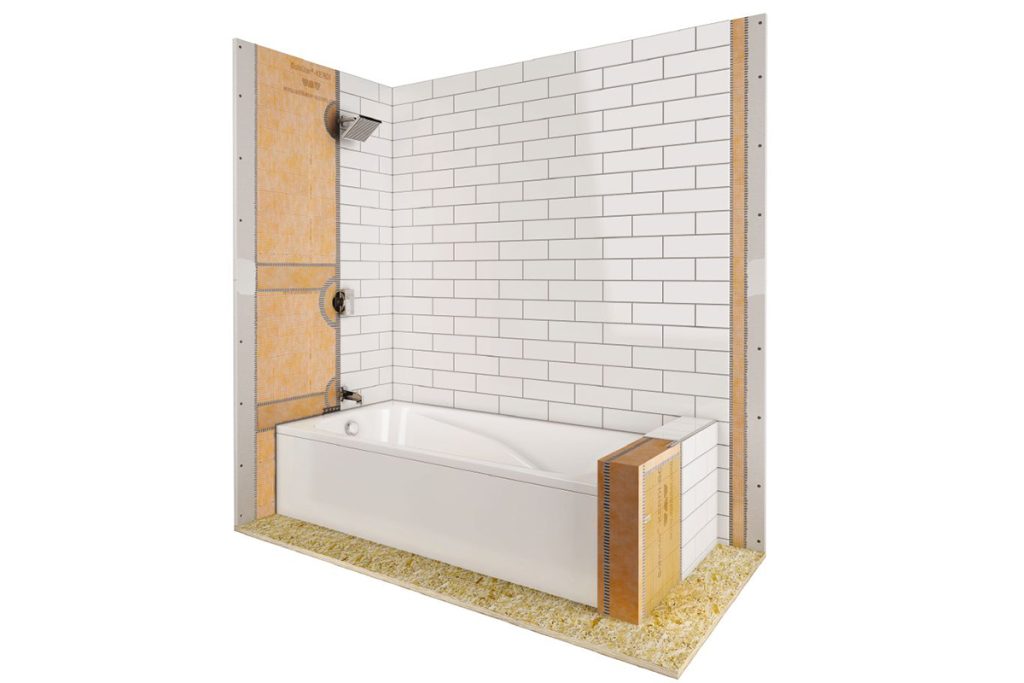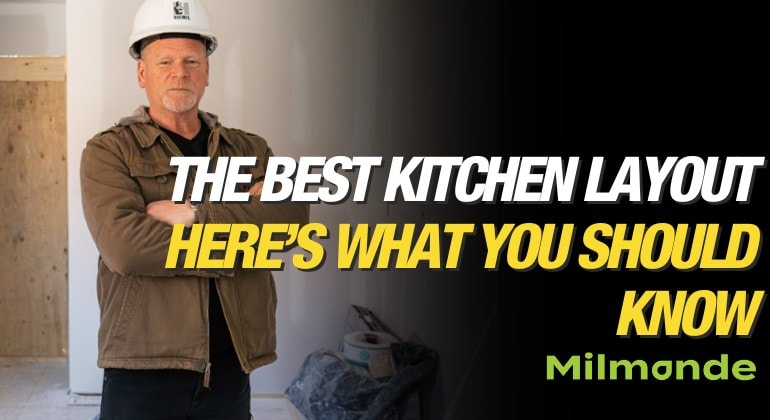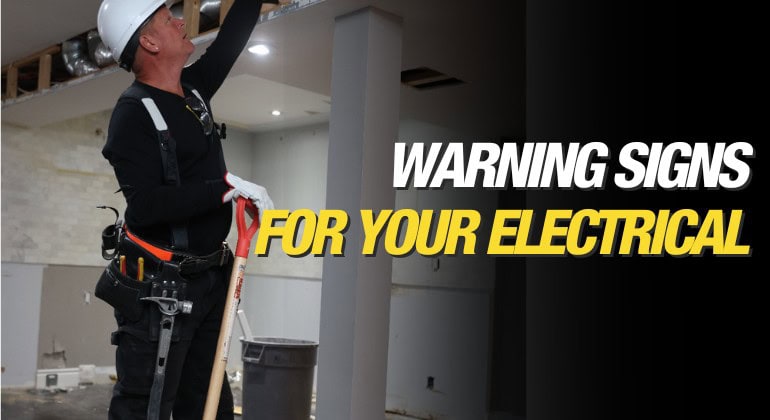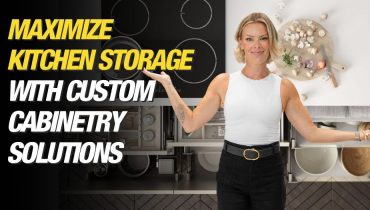Dream of a career where your skills bring joy, enable freedom, and create unforgettable memories? The thriving recreational vehicle (RV) industry offers just that! It’s more than fixing vehicles; it’s...
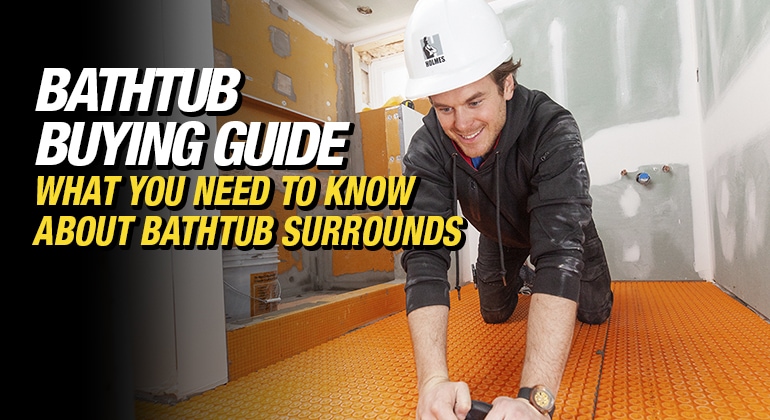
Bathtub Buying Guide: What You Need To Know About Bathtub Surrounds
By Mike Holmes
Mike’s Advice / Bathroom Renovation
Wednesday, July 27th, 2022 @ 4:55pm
How To Choose a Bathtub, Correctly Install It, and Make It Watertight?
I often talk about showers, curbed or curbless as they are a great option for your bathroom. Curbless showers are especially great as we grow older. However, a bathtub is still important to have in your home, especially if you have one main bathroom and kids in the house, then a shower and bathtub combination is a must. Bathtubs have also become the focal point of spa-like bathrooms where you can find comfort, and relaxation and soak all your worries away. However, like any reno project, it’s important to make sure that it’s done right and that it’s watertight, by picking the right bathtub surrounds!

Bathtub Shower Combination, Renovation completed by Rinaldi Homes, Holmes Approved Homes Builder
Here’s a guide on what you need to know about bathtub surrounds and properly installing your bathtub.
Bathtub Styles – Endless Possibilities
The options are endless and include soakers and whirlpools; classic claw-footed models; contoured shapes, ovals, squares, and rounded tubs; tubs with neck rests and armrests; tubs set into platforms; and tubs you step down into—or even walk into.
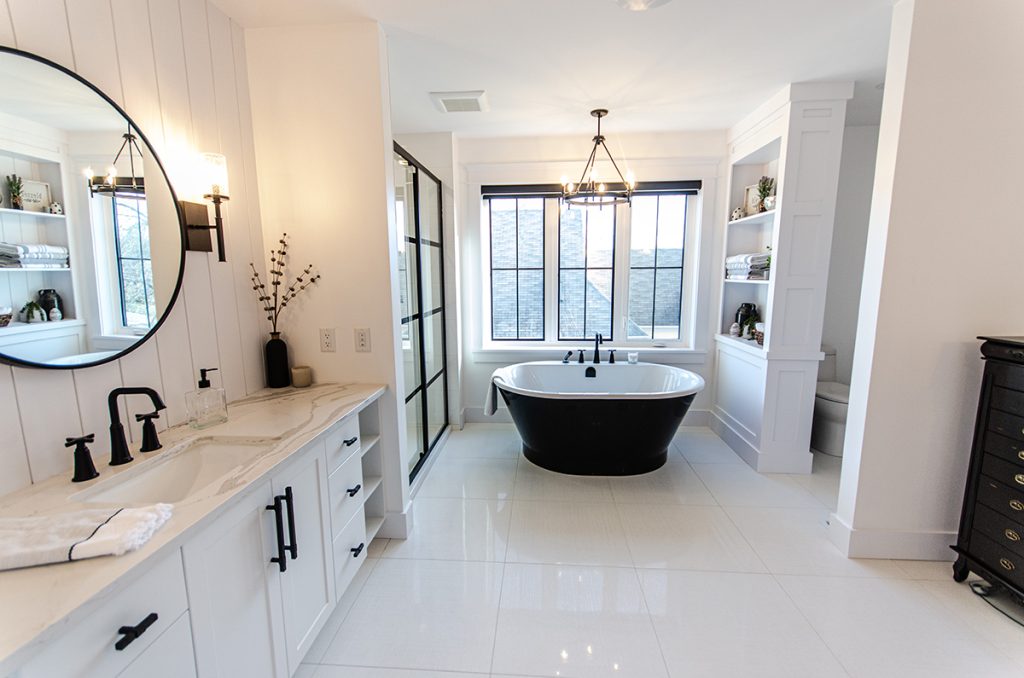
This freestanding tub looks great in this black and white themed bathroom by Chris Franklin Homes, Holmes Approved Homes Builder.
However, all this variety comes at a price, so it’s important to remember that the total cost of a tub will reflect the amount of technology involved as well as the type of finish and material.
Standard Bathtub
Most of us are familiar with the basic standard bathtub, which is also known as the alcove bathtub. The overall size is typically 60 inches in length by 30 or 32 inches wide and is 14 to 16 inches high. These are ideally bordered by one, two, or three walls.

Bathroom renovation with standard bathtub completed by Lexis Homes, Holmes Approved Homes builder.
Freestanding Bathtub
A freestanding bathtub is exposed on all sides and sits directly on the bathroom floor with no feet or platform to support it. It is not surrounded by cabinetry or built into an alcove. This style of tub often serves as a luxury focal point for any bathroom.
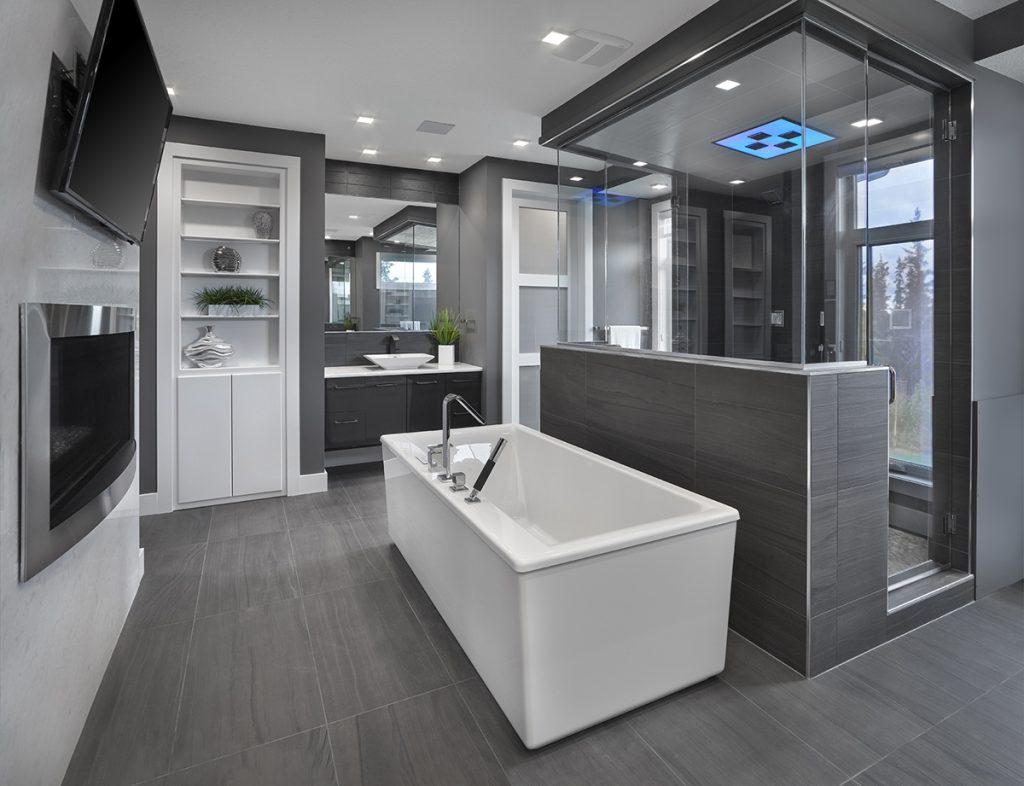
Bathroom Renovation with freestanding tub completed by Vicky’s Homes, Holmes Approved Homes Builder.
Claw-foot Bathtub
Claw-foot baths are classic and traditional by design. They are usually quite large and made of cast iron. Because of the porcelain enamel applied to the outside and interior surfaces, this design is usually considered high-end.
Corner Bathtub
A corner tub is a great option if you are short on space and don’t have room for the bathtub to fit along the wall. If you have a small bathroom, this sort of tub is a good option. It enables you to conserve space without sacrificing comfort. It may even be superior to a standard bathtub.
Walk-In Shower Versus Bathtub
If you only have one bathroom then a shower tub combination is a must. If you have the luxury of having additional bathrooms, and having a tub is not a must, then a walk-in curbless shower is a great solution especially if you want to stay in your homes as you age.
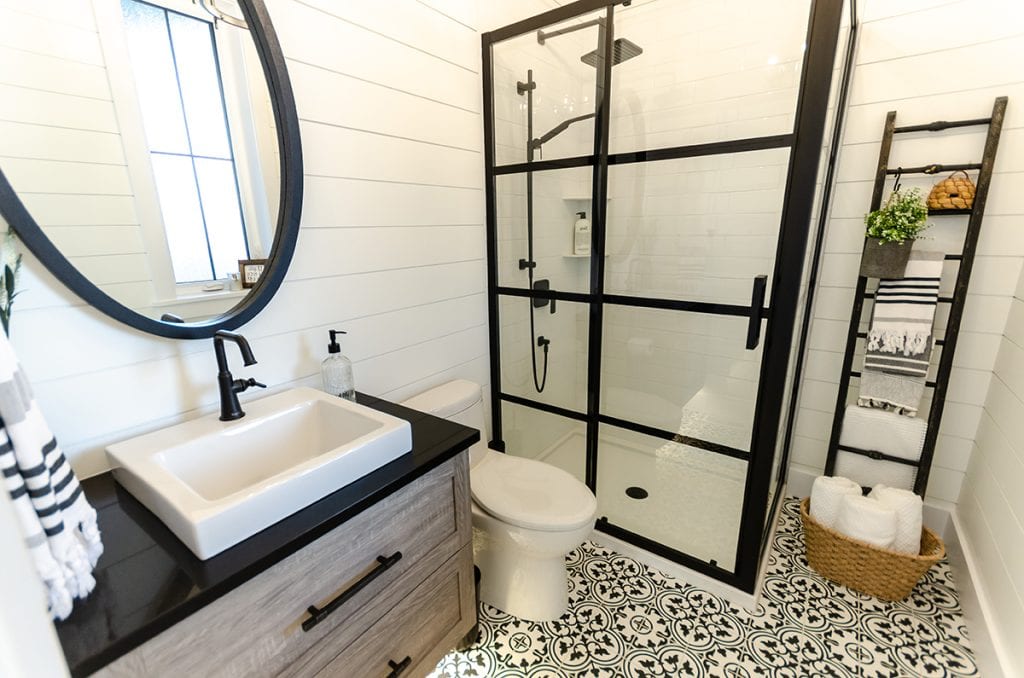
Curbless shower bathroom renovation completed by Chris Franklin Homes, Holmes Approved Homes Builder.
RELATED
What Is A Walk-In Bathtub?
A walk-in bathtub is one that is built to allow you to walk right into it and is good for people who have difficulty climbing in and out of regular bathtubs. This removes many of the risks of sliding and falling. However, they do have some drawbacks.
You can’t get out of the tub until the water has drained, and you have to wait for the tub to fill up with water. There is also a small step to get into the tub. If you have serious mobility issues you may be better off installing a walk-in or curbless shower.
Whirlpool Bathtubs
Any bathtub with water jets is referred to as a whirlpool. The whirlpool tub, which was originally designed for therapeutic purposes, has jets that drive water, focusing on areas that benefit from the effects of hydrotherapy. These tubs can assist people with tight muscles and joints to relax. This is especially beneficial for persons who exercise frequently or have medical issues like arthritis.
Do You Need an Access Panel for a Bathtub?
The simple answer is no, not for a regular bathtub, but you know me, I like to do things once and do it Right from the start, so it makes sense to get your contractor to install an easy access panel for shut-off values.
Also, an access panel is essential when you have a jetted or whirlpool bathtub, as it’s important to be able to access the motor for future repairs and maintenance. Access panels can be cleverly concealed in the bathtub surround paneling, or in an adjacent vanity or closet space close to the motor.
Tip: Jetted and walk-in tubs require electrical wiring and therefore this work needs to be completed and inspected by a Licensed Electrical Contractor. A permit should also be filed with the Electrical Safety Authority, if you live in Ontario.
Other Types of Bathtubs
Air Tub
An air bath is a bath that uses air jets to provide a full-body massage. Warm air is blasted via a staggering air jet design, creating millions of tiny, energizing bubbles that encircle your body, giving you a weightless, effervescent sensation.
Drop-in Bathtub
Drop-in tubs are just tub shells. They’re housed in a framed enclosure that matches the bathroom’s cupboards or tiling. Because an enclosure is a distinct purchase, keep it in mind when planning your budget.
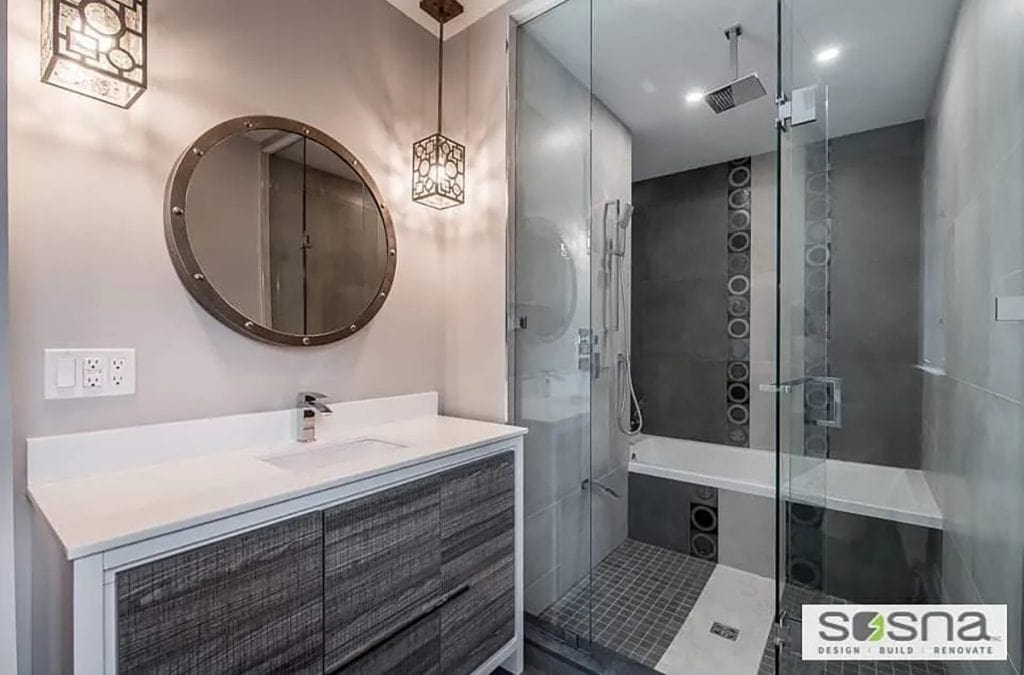
Drop-in bathtub, and bathroom renovation completed by Sosna, Holmes Approved Homes renovator.
Drop-ins for floor-level installation are known as undermounts. The tub’s lip is covered with tile.
Undermount Tubs
An under mount bathtub is one that is built beneath a rim, which means that the surrounding deck or area is covered and the bathtub is supported by the floor structure below.
Alcove Bathtub
Alcove tubs are tubs that are encircled on three sides by walls. An integral tub apron is then used to cover the front side. Right and left-handed drains are available, and the one you choose depends on the layout of your bathroom.
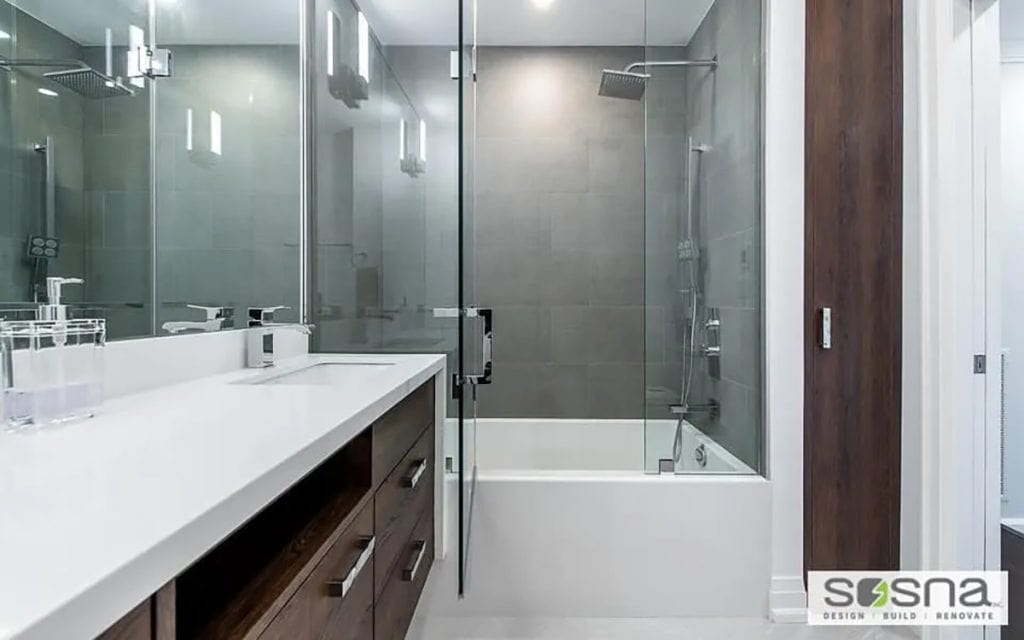
Alcove Bathtub in bathroom renovation completed by Sosna, Holmes Approved Homes Renovator
Japanese Soaking Tub
A Japanese soaking tub is a small, deep bath that has become the latest “it” item in the bathroom. A bench seat is standard on all Japanese soaking bathtubs, giving you the best in bathing comfort.
The advantage of a Japanese soaking tub is its tiny size. A soaking tub is ideal for a tiny bathroom where a standard long tub would be too big. As a result, they are an excellent choice for condos.
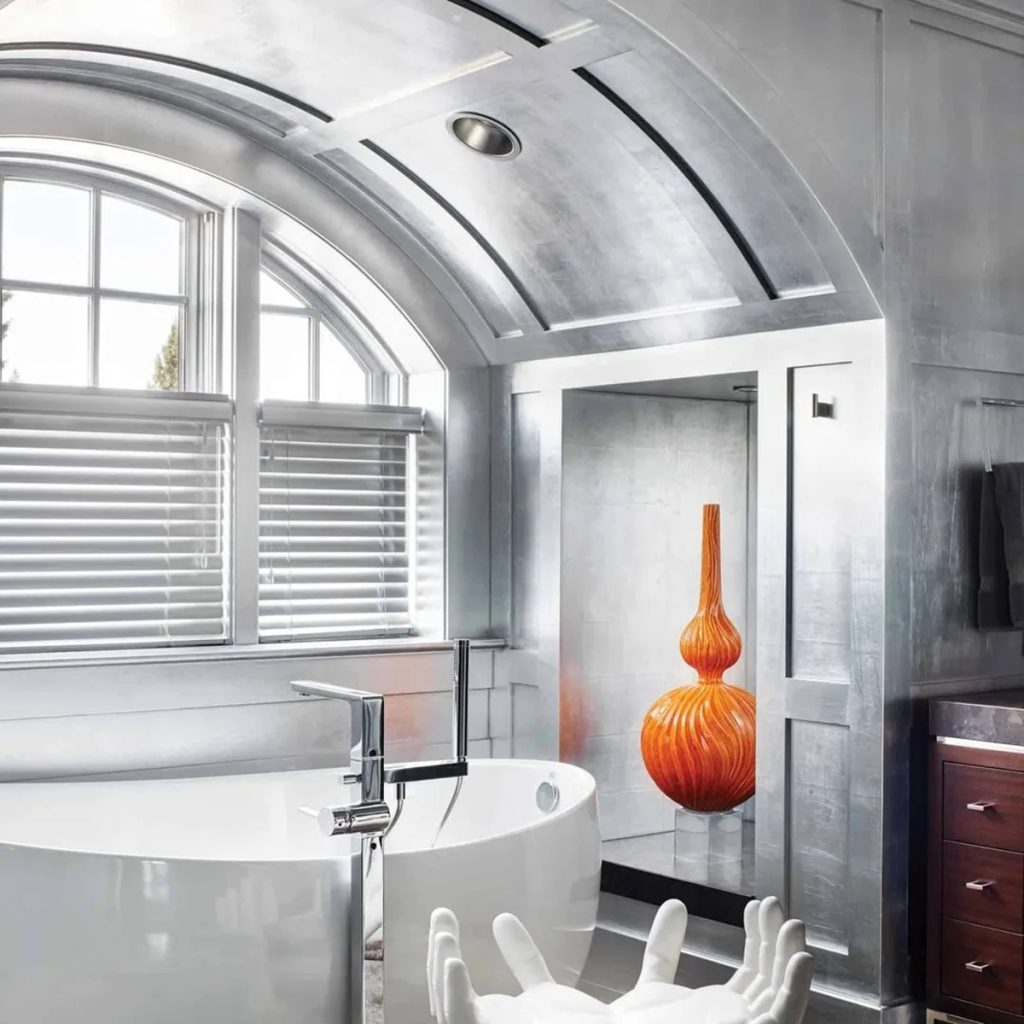
Japanese Soaking Tub In Bathroom Renovated by Western Living, Holmes Approved Homes Builder
What Is A Bathtub Surround?
Bathtub surrounds cover and protect the walls of your bath from water, mold, and mildew. They are made from several materials, most commonly moulded acrylic panels, cultured marble, composite stone, fiberglass, and solid surface.
Built-in bathtubs are usually enclosed on three sides, making it easier to contain the water with a partition glass wall or door. Built-ins also take up less space in the room, and the bathtub surround forms a ledge where bath products can be easily accessed.
Tip: Most tubs, with the exception of a free-standing bathtub will require some sort of bathtub surround.
Drop-in and undermount bathtubs require the most installation work, and a deck is commonly built around the tub. Drop-in bathtubs drop into a cutout area with a finished look with 3 walls.
Schluter Makes Bathtub Surrounds East To Install
The Schluter-KERDI-TUBKIT is easy to use and makes waterproofing the tub surround before tile installation a whole lot easier. The kit contains a waterproofing membrane, waterproofing strip, pipe seal, mixing valve seal, and a sealing and bonding compound.
Thin-set mortar is used to adhere the tiles to the KERDI. Ceramic tile bathtub surrounds can be built using ordinary drywall because this solution is not only waterproof but also vapour tight.
You can also complete the bathtub platform with Schluter®-Profiles. Schluter profiles provide a clean and elegant finish by eliminating the need for caulking while protecting tile edges. They come in a wide range of styles and finishes to suit any décor.
Should You Caulk Around the Base of the Bathtub?
Yes, you’ll want to plug the gap, just like any other gap near your bathtub. This is important to avoid water damage and the growth of mold and mildew. Because you’re combining two distinct materials, caulk should be used at the joint between the floor tile and the tub.
How Do You Seal and Fill the Gap Between Bathtub and Wall?
Kerdi-board panels or Kerdi membrane are sealed to the bathtub using Schluter Kerdi-Fix or other suitable sealants in conjunction with Schulter Kerdi-Band waterproofing strips.
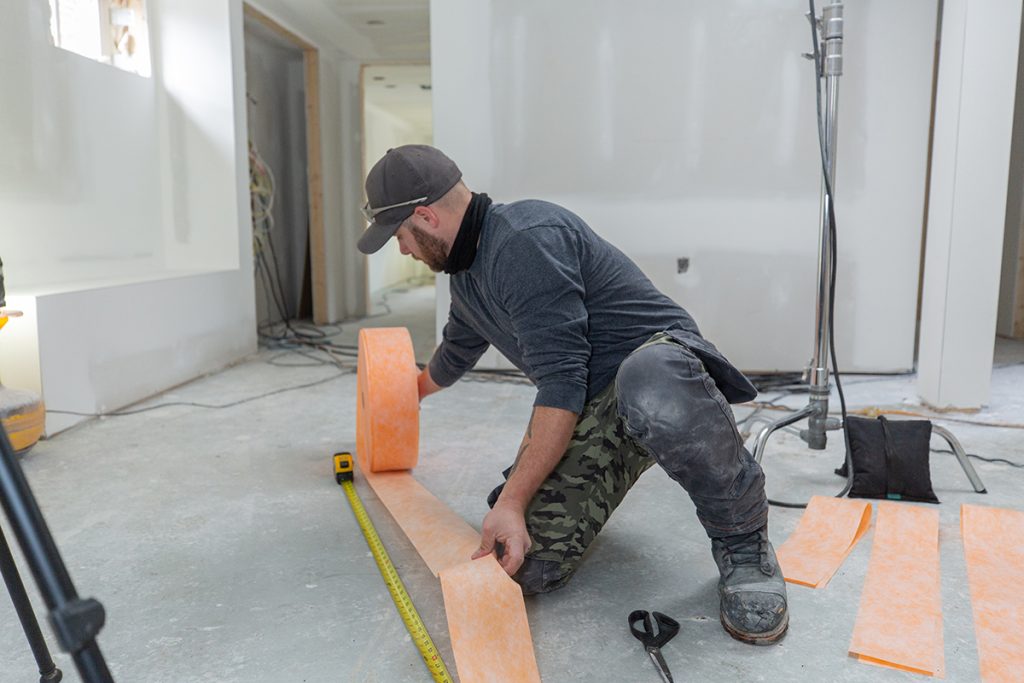
Schluter Kerdi-Band Waterproofing Strips Installed In Our Bathroom Projects
Both the Schluter Kerdi-Seal-PS and the Schluter Kerdi-Seal-MV are prefabricated waterproofing seals. They have over-molded rubber gaskets that protect moisture-sensitive backing panels at the mixing valve. They are also designed for protrusions through Kerdi-Board panels or Kerdi membrane.
As an alternative Kerdi-Fix can be used to seal the tub spout and showerhead.
What is the Best Sealant for Bathtubs?
Silicone and latex are the best caulking materials for a bathtub. Silicone sticks well to nonporous, smooth surfaces like glass, ceramic tile, and metal.
Latex is preferable for surfaces that are uneven, porous, or mismatched, such as stone tiles or wood trim around the tub’s base.
RELATED
How Do You Tile Around The Bathtub?
Schluter Kerdi-Board waterproof building panel combines substrate and waterproofing installation into one and can be installed directly over the wall framing (wood or metal studs), using Schluter screws and washers.
The Schluter all-set or unmodified mortar should then be used with Kerdi-Band over the seams and over all the penetration points. Kerdi-board ½” has an R-value of 2.2 so it is a great option on outside walls and should be used on studs spaced at 16” in center and ¾” board should be used on studs at 24” in the center.
Tip: With the grid pattern on the Kerdi-board cutting is super easy and can be done with a utility knife.
Schluter Offers a Wide Range of Informative Tutorials and an APP
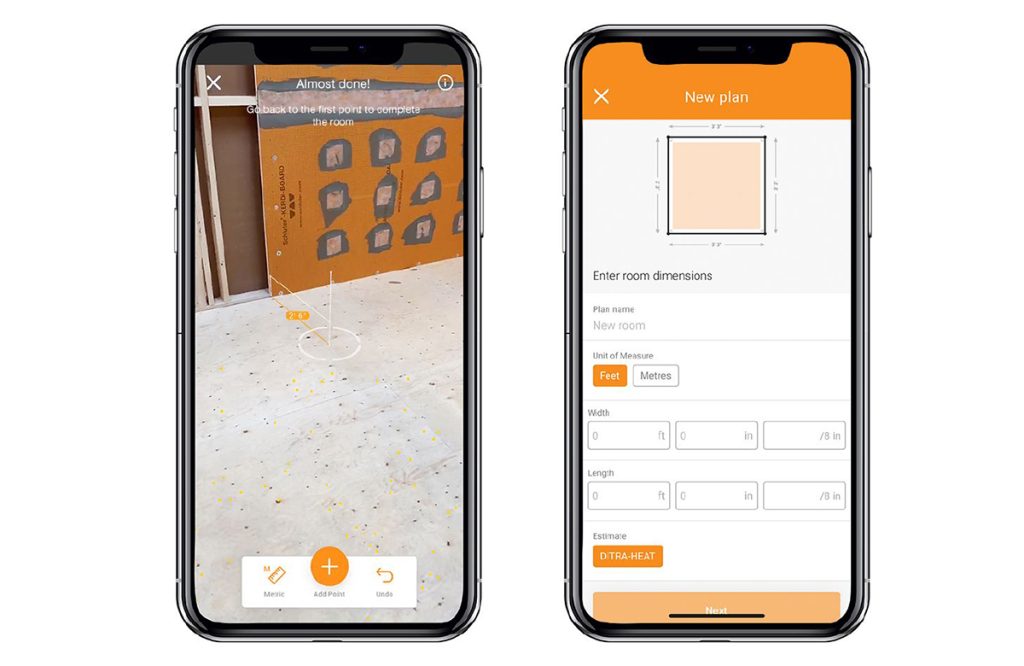
Schluter App has an augmented reality feature to plan your bathroom renovation.
Check out this video and download the Schluter App, an invaluable tool for contractors and seasoned DIY’ers. This is also great for homeowners who want to become knowledgeable about their bathroom renovation.
This app provides easy access to the entire Schluter product line and informative installation tutorials to complete any tiling job. Some of the coolest features are the Ditra-Heat Estimator and the Augmented Reality.
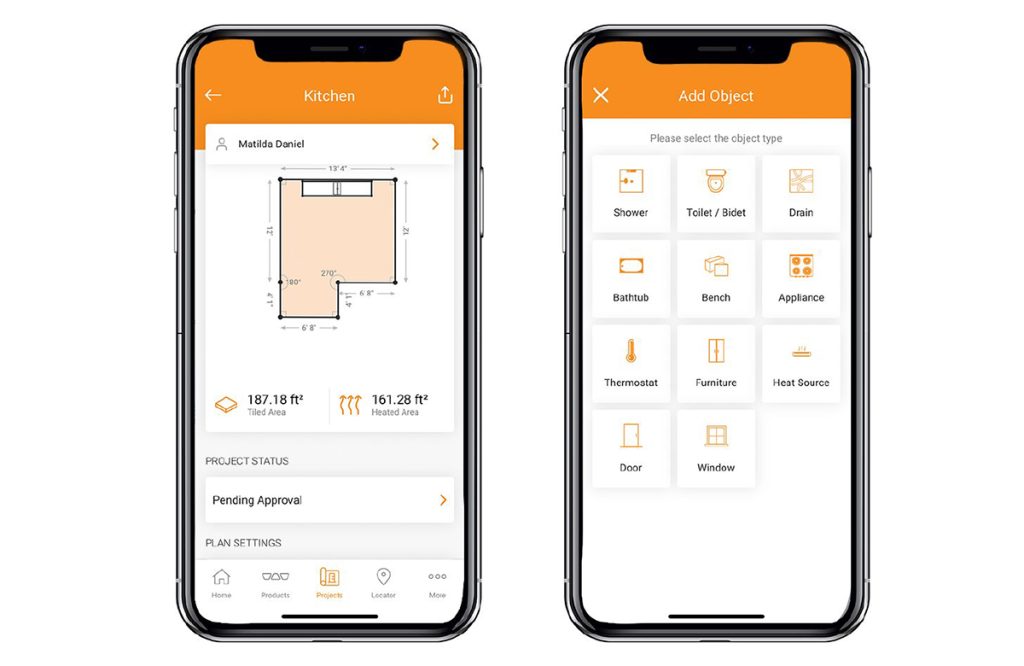
Schluter App gives you access to the full Schluter product line and tutorials to help you with any tiling job.
The Ditra-Heat Estimator helps you develop a visual outline of your space, recommends items, and calculates the supplies you’ll need to finish your floor warming project. The Augmented Reality (AR) feature assists you in measuring and mapping out your project. You can either add plans or manually enter your dimensions. You may also store and share your product list and expenses with the app.
What is a Knee-Wall?
Knee walls are sometimes known as half-walls or partition walls. They are often built around or up against a shower stall or bathtub surround and reach from the floor to a height of around 3 feet (91.44 cm). Knee walls are usually an extension of a bathtub or shower’s side and can be tiled.
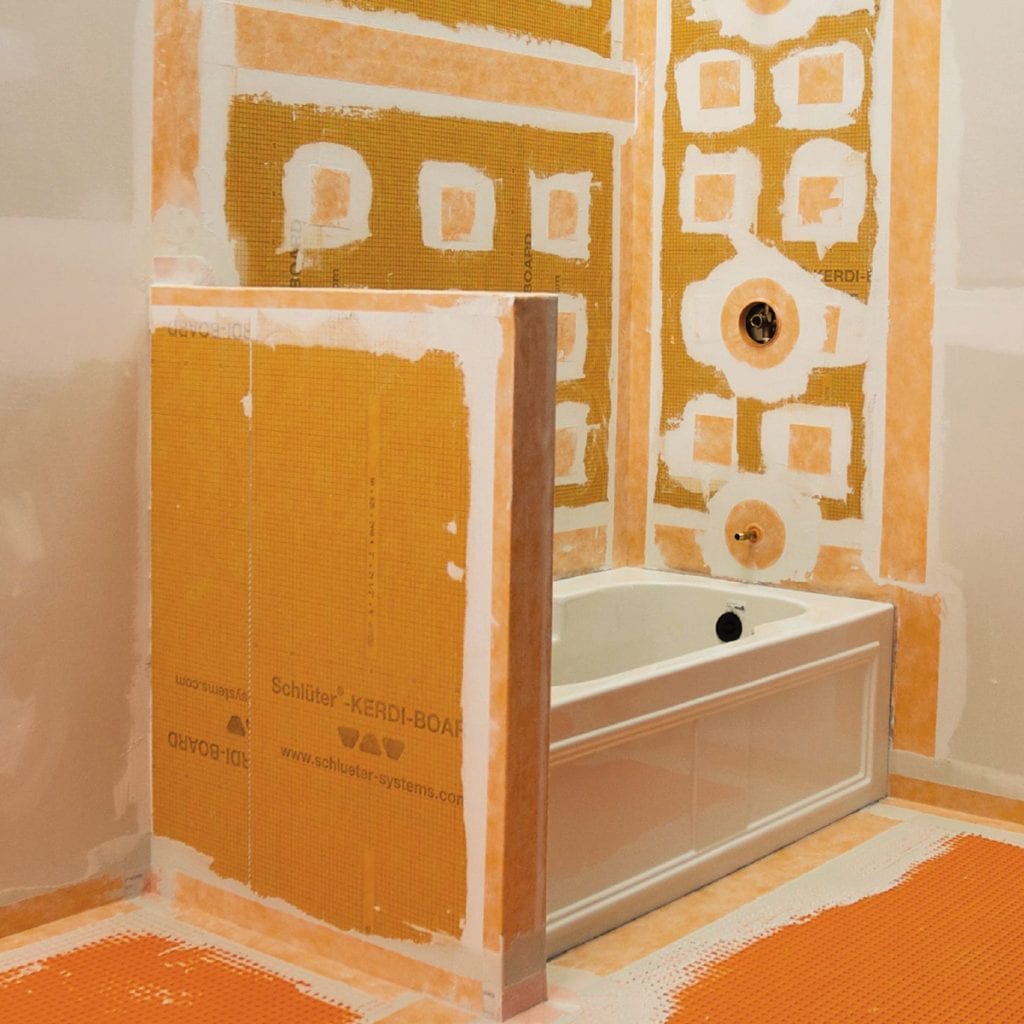
Partition Wall Built using Schluter Kerdi-Board
RELATED
Knee-walls, benches, and almost anything you can think of can be built using Schluter Kerdi-Board, just make sure to use the appropriate thickness, 2” boards are recommended for these types of applications.
Tip: Grab bars must be anchored in the structure or solid blocking behind the Schluter Kerdi-Board panel to ensure the area is sufficiently supported and safe for use.
No Bathroom Renovation is Complete Without a Heated Floor
If you are doing any kind of bathroom renovation, I highly recommend installing a heated floor with Schluter®-DITRA-HEAT or Schluter®-DITRA-HEAT-DUO and a programmable WIFI thermostat. Imagine stepping out of a nice hot bath onto a nice warm floor! It will certainly add to the experience and provide luxury and comfort!
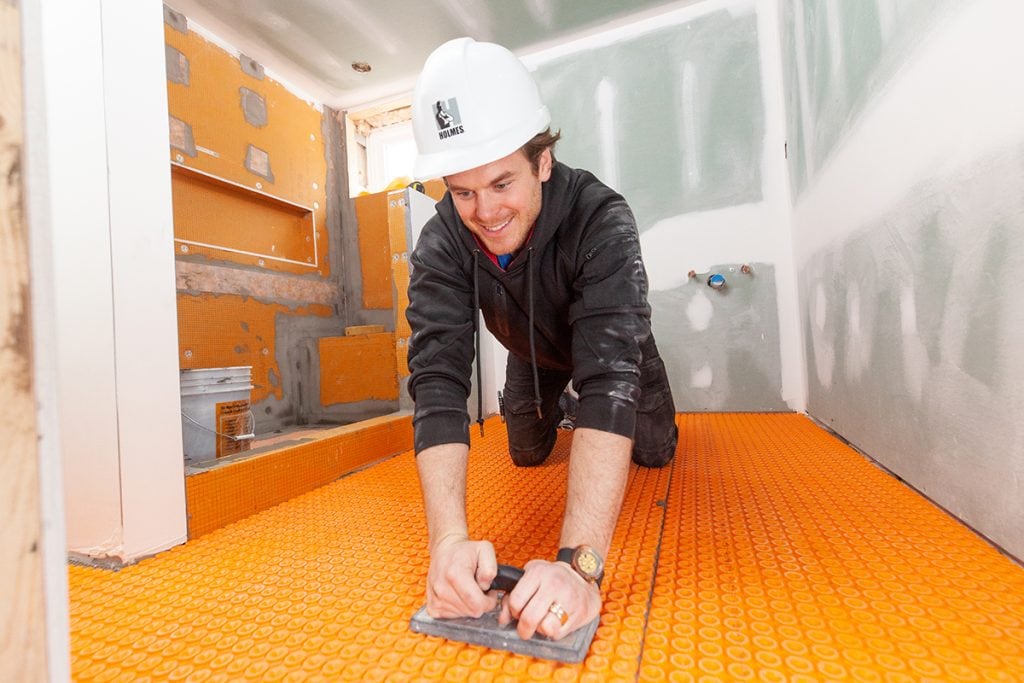
Micheal installing Schluter Ditra Heat on Holmes Family Rescue.
RELATED
When Should You Replace Your Bathtub and How Long Does a Bathtub Last?
If you have leaks, pooling water, trickles through cracks or puddles on your bathroom floor, or even worse, watermarks on your ceiling, it’s time to replace your bathtub.
Bathtubs typically last 10 to 30 years, depending on the bathtub material. Tubs constructed of acrylic and fiberglass generally will last about 10-15 years. A porcelain-enameled cast-iron tub will survive much longer, although it will require refinishing every 5 to 15 years.
Bathtub Faucet and Fixtures
Any homeowner knows there is an endless selection of faucets and fixtures. I suggest looking for high-quality faucets that have an all-brass or matte black body, that suits your overall style of bathroom, and keep the finish consistent throughout the entire bathroom, including towel bars and toilet paper holders.
Overflow Hole
The tub waste is the bath drain on the floor that empties the tub. The overflow is a hole in the tub wall that is connected to the waste pipes. The overflow prevents an overflowing tub from spilling water over the edges thanks to a secondary drain or overflow tube located higher up on the side of the tub wall.
Its aim is to gradually lower the water level in the tub without opening the waste drain, allowing displaced water to drain before it reaches the tub’s edge.
Does a Tub Need an Overflow?
Although some municipalities may require bathtub overflows, they are not needed for all residential housing or standard plumbing codes. As a result, not every tub is designed with an overflow. Even if the tub has an overflow, make sure it’s connected to an overflow pipe and the water waste line properly. If you don’t, the open overflow can seep water behind the tub, perhaps causing damage to the wall and tub surround. This is why I recommend hiring a professional to do the plumbing.
How Much Does it Cost to Replace or Install a Bathtub?
The cost of installing or replacing a bathtub ranges from $800 to $4,600, depending on the style of the tub and the changes required.
For a basic type, a new tub costs $200 to $1,000, while jetted tubs cost $700 to $4,000. A tub surround might cost anything from $600 to $3,500 to build.
The cost of replacing a bathtub and wall tiles ranges from $1,500 to $10,000. The cost of a tub combo with a built-in shower and surround varies, as does the cost of a freestanding or jetted tub with bespoke tiling.
How Much Do Soaking Tubs Cost?
On average, soaking tubs cost $600 to $2,000, with costs ranging from $400 to $15,800 depending on the size and style. Soaking tubs are larger and deeper than standard bathtubs, allowing bathers to be completely submerged. Some units are as long as 6.5 feet and sized to accommodate two adults. They can be freestanding or built-in. There are no whirlpools or air jets included.
How Much Do Whirlpool Tubs Cost?
A whirlpool tub is a popular choice nowadays, and they come in a variety of sizes, shapes, and colours. They also come with multiple or single jets that are both therapeutic and relaxing. A pump circulates bath water through multiple jets strategically placed on the tub sides in a hydro-massage whirlpool bath.
Another is the therapeutic air massage—or “air bath”—which surrounds the bather in thousands of soft bubbles that flow in from small pores in the tub’s bottom and sides.
Jetted tubs range in price from $400 to $16,800, depending on the size, type, brand, and a number of jets. Standard whirlpool jetted tubs cost between $800 and $3,000, whereas larger jetted tubs cost between $3,000 and $16,800 and include features like contoured chairs, chromatherapy, and aromatherapy.
How Much Do Freestanding Tubs Cost?
Depending on the style, freestanding tubs range in price from $600 to $15,700, or $2,500 on average. Freestanding bathtubs can be placed anywhere in the bathroom, are usually deeper than normal tubs, and are available in a variety of designs and styles, with straight or curved sides.
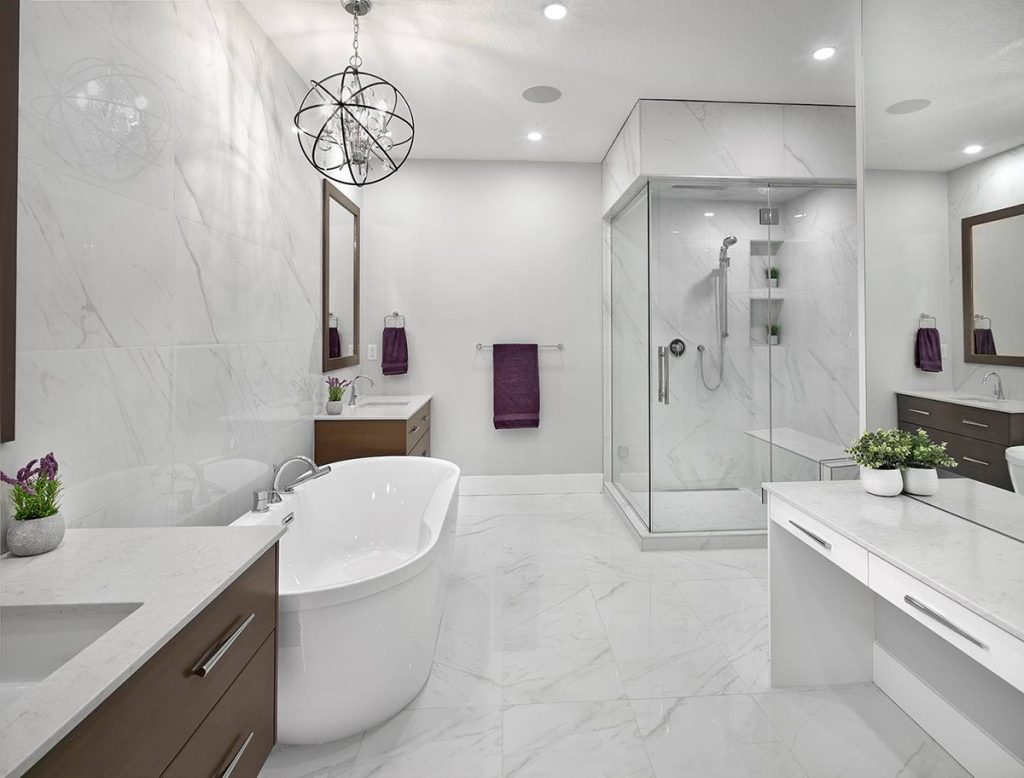
Freestanding Bathtub In Big Bathroom Renovation Completed by Vicky’s Homes, Holmes Approved Homes Builder
How Much Do Clawfoot Tubs Cost?
Clawfoot tubs range in price from $600 to $7,200, with an average cost of $2,000. A clawfoot bathtub is a freestanding tub with four feet that is traditionally styled and can be basic or intricately built in modern or art deco styles. Clawfoot tub fixtures are usually more expensive than regular tub fixtures.
How Much Do Walk-In Tubs Cost?
Walk-in baths are around $5,000 on average but can range in price from $2,000.00 to $12,000.00, depending on size, brand, and extra jets. Walk-in tubs have leak-proof doors and safety features that help promote accessibility for elders or individuals with disabilities or restricted movements.
Do You Need to Reinforce the Floor Before Installing an Oversized Tub or Cast Iron Tub?
Most homes should be strong enough to accommodate a cast iron tub. Assuming the framing underneath has not rotted, or been cut into and not properly reinforced, you should be fine. However, if your floor feels bouncy it would be best to check with your contractor to ensure your floor is structurally sound and safe.
An Extra Large Bathtub, Can Your Water Heater Handle It?
Your water heater has been sized specifically to the demand of your lifestyle and home, and therefore should be able to keep up with the demand. However, if you are considering upgrading your bathtub to something larger and more luxurious make sure the water heater can handle it.
The average tub holds about 30 gallons or 113 litres of water. A soaker tub can require 42 gallons or 159 litres and a Jacuzzi tub even more water – 80 gallons or 360 litres of water.
RELATED
Gas Tankless Water Heaters – What you Should Know
What you Need to Know About Boilers for your Home Heating
TYPICAL BATHTUB MATERIALS
Bathtubs come in a variety of materials, and the most common are fiberglass, porcelain-enameled steel, enamel cast iron, and acrylic.
Fiberglass Bathtub
Fiberglass is the best bathtub material for a lightweight, inexpensive, and easy-to-clean tub. However, it is prone to scratching and doesn’t wear well, lasting about a dozen years. Fiberglass with an acrylic finish will hold up longer.
Porcelain-enamelled Tub
Porcelain-enamelled is a steel-based material covered in porcelain enamel. It is a low-cost, smooth, glossy, and durable finish that is easy to clean.
Coated Cast Iron Tub
Coated cast iron is heavy, especially when filled with water. However, your home should be structurally sound to withstand the added weight.
Acrylic Tub
Acrylic is a plastic with a high-gloss finish and excellent durability. Solid acrylic is a mid-price-range product that is more durable than fiberglass. Typically, scratches are less noticeable because the color is solid all the way through.
Acrylic is a popular material for unusually shaped whirlpools with moulded armrests and other decorations since it is easy to mould into designs. It’s also lightweight, which is vital in huge tubs where structural parts can be damaged. Acrylic bathtubs are simple to install and can last for 10 to 15 years.
What Is The Best Material To Choose For Your Bathtub?
Fiberglass is the most lightweight, cost-effective, and easy-to-clean bathtub material. Porcelain-enamelled steel and wood retain heat exceptionally well., Castwhereas cast iron enamel finish tubs are probably the most durable and resistant to chipping, scratching, and denting.
RELATED
There are many styles and options available when it comes to installing a bathtub, however, always do your homework and choose a style and material that is durable and practical for your needs.
READ NEXT
11 Small Bathroom Lighting Ideas – Tips for Better Lighting
Benefits of Adding a Bathroom Shower to Your Basement
Adding a Basement Bathroom & What You Need to Know Do’s and Don’ts of Your Bathroom Reno
